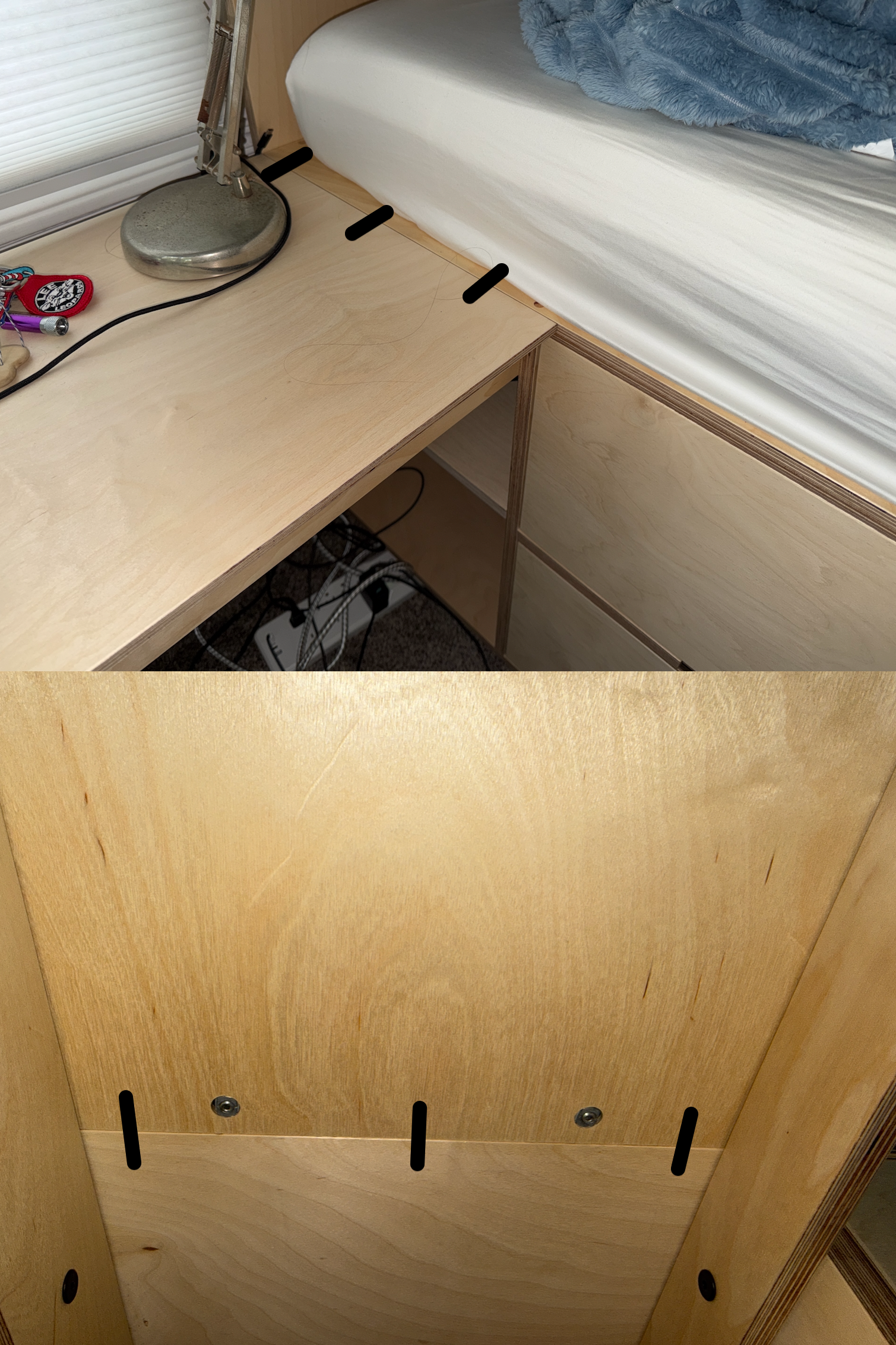I have 4 oak bookcases to build for a customer, although I don't think work will start on these for another couple of weeks. I'm in two minds how to build these and looking for some advice. They're all quite big:
2.7 x 1.2m - 2 of these
2.0 x 0.9m
2.3 x 2.15m
No backs to any of them (customer request) but I will fix them to the wall through battens situated at the top of the units and probably halfway down. Maybe some L-brackets too.
The only one I could fit in my van assembled is the 2.0 x 0.9m one. The others would need to be assembled on site or I hire a bigger van to transport them. So I'm thinking of building all of them with the KV connectors and assembling all on site with no glue (2 connectors per shelf and a domino in the middle). I've done this before for some birch plywood units of this size and got a good result - these will be my first ones from oak however. I am starting to now think more in terms of what looks best for the customer and weighing up the pros and cons:
The upside of the connectors is they'll make transport easy and less stressful assembly on site - no glue and no clamping required. The downside is some of the connectors will be visible although I can "hide" many of them on the bottom of the shelves and top of the shelves for the higher ones.
Alternative is I just use exclusively dominoes but then I have the stress of gluing up on site and clamping, or I assemble at home and rent a bigger van to deliver them to client. I will almost certainly need to hire someone to help me shift these too, eating into the bottom line. Plus I'm worried about glue smear at the joints showing through the clear oil if I went for a glued assembly with dominoes.
I've done a few of these units in the past with connectors and never had any comeback from customers about the look of the connectors. Maybe I am overthinking the whole thing but interested in other opinions.
2.7 x 1.2m - 2 of these
2.0 x 0.9m
2.3 x 2.15m
No backs to any of them (customer request) but I will fix them to the wall through battens situated at the top of the units and probably halfway down. Maybe some L-brackets too.
The only one I could fit in my van assembled is the 2.0 x 0.9m one. The others would need to be assembled on site or I hire a bigger van to transport them. So I'm thinking of building all of them with the KV connectors and assembling all on site with no glue (2 connectors per shelf and a domino in the middle). I've done this before for some birch plywood units of this size and got a good result - these will be my first ones from oak however. I am starting to now think more in terms of what looks best for the customer and weighing up the pros and cons:
The upside of the connectors is they'll make transport easy and less stressful assembly on site - no glue and no clamping required. The downside is some of the connectors will be visible although I can "hide" many of them on the bottom of the shelves and top of the shelves for the higher ones.
Alternative is I just use exclusively dominoes but then I have the stress of gluing up on site and clamping, or I assemble at home and rent a bigger van to deliver them to client. I will almost certainly need to hire someone to help me shift these too, eating into the bottom line. Plus I'm worried about glue smear at the joints showing through the clear oil if I went for a glued assembly with dominoes.
I've done a few of these units in the past with connectors and never had any comeback from customers about the look of the connectors. Maybe I am overthinking the whole thing but interested in other opinions.



